OddCameras.com
ICA Toska 215
The ICA cameras were produced between 1909 and 1926. ICA was a merger
of four reknown camera makers: Hüttig AG, Dresden, Kamerawerk Dr.
Krügener, Frankfurt/Main, Wünsche AG, Reick (near Dresden) and Carl
Zeiss Palmos AG, Jena. They joined their forces to become the
Internationale Camera AG (ICA), Dresden. In 1926 ICA, Dr. Ernemann,
one of the best German camera makers, Goerz and Contessa-Nettel merged
to become Zeiss Ikon, Dresden. Outside of Germany they kept selling
ICA named cameras for some years, so there could be ICA cameras with
shutters and lenses from 1928 or so.
The Toska is a folding plate camera, built like a very compact field
camera. Film size is 9x12. The Toskas are upper.medium level cameras,
obviously a
simplified version of the top level Ideal.
They feel solid, are easy to manipulate and have double extension. The
lenses are interchangeable, a feature which is not common on this type
of camera. The Toska was an old Hüttig model, continued under ICA.
Lens: Zeiss Novar Anastigmat 1:6.3 13.5cm, F6.3-36,
interchangeable lens/shutter unit
Shutter:
Ica permanent 1-1/100 B T (working)
Weight: 1155gr.
Size: 170x120x45
Some photos:
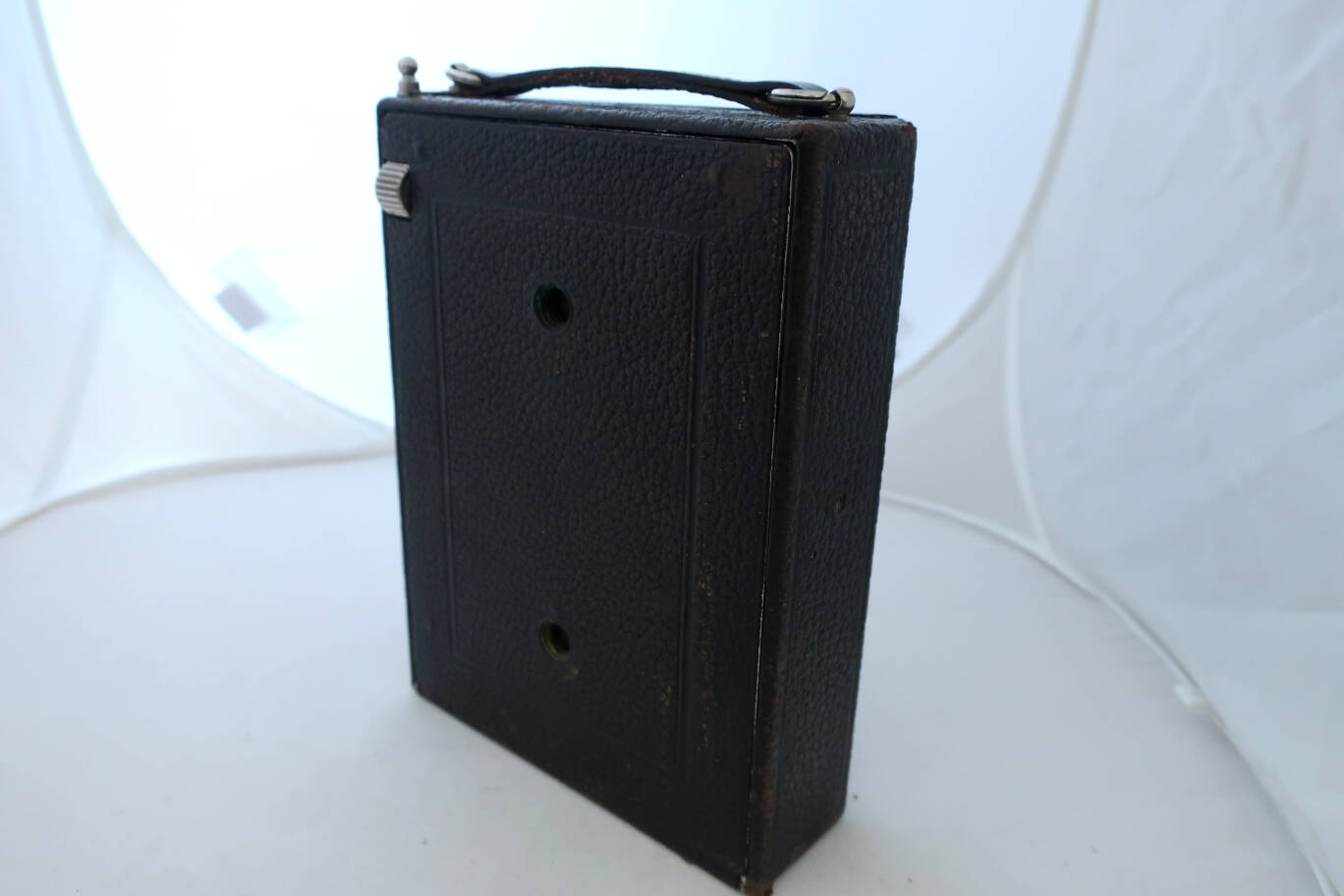
Camera closed. 2 tripod sockets on the bed.
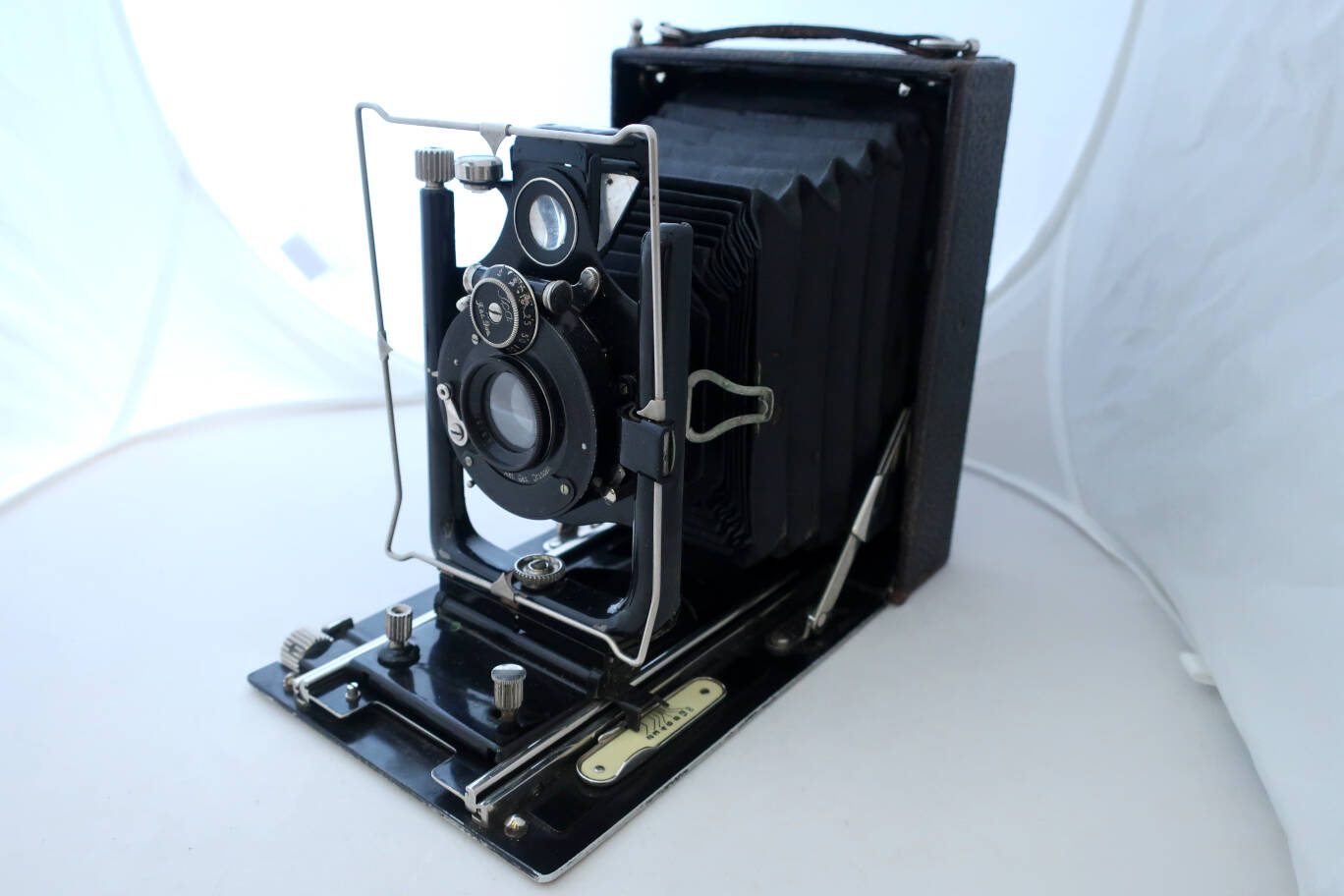
Seen from the right.
Brilliant finder with spirit level, can be switched to landscape format.
Distance scale on the bed.
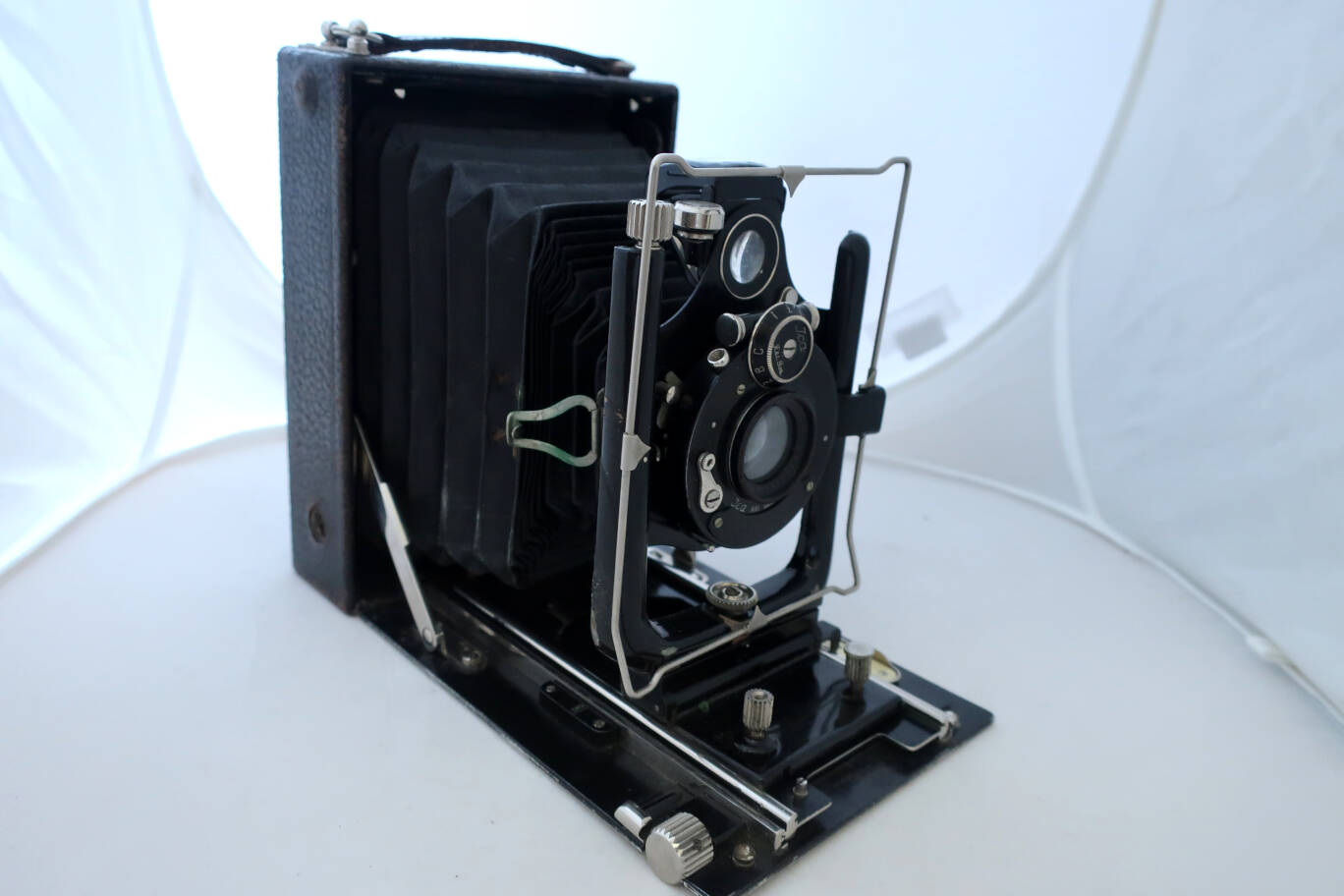
Seen from the left. The tab near the bed advance has to be shifted to
unblock or block the bed movement. Tripod socket for landscape format on
the housing.
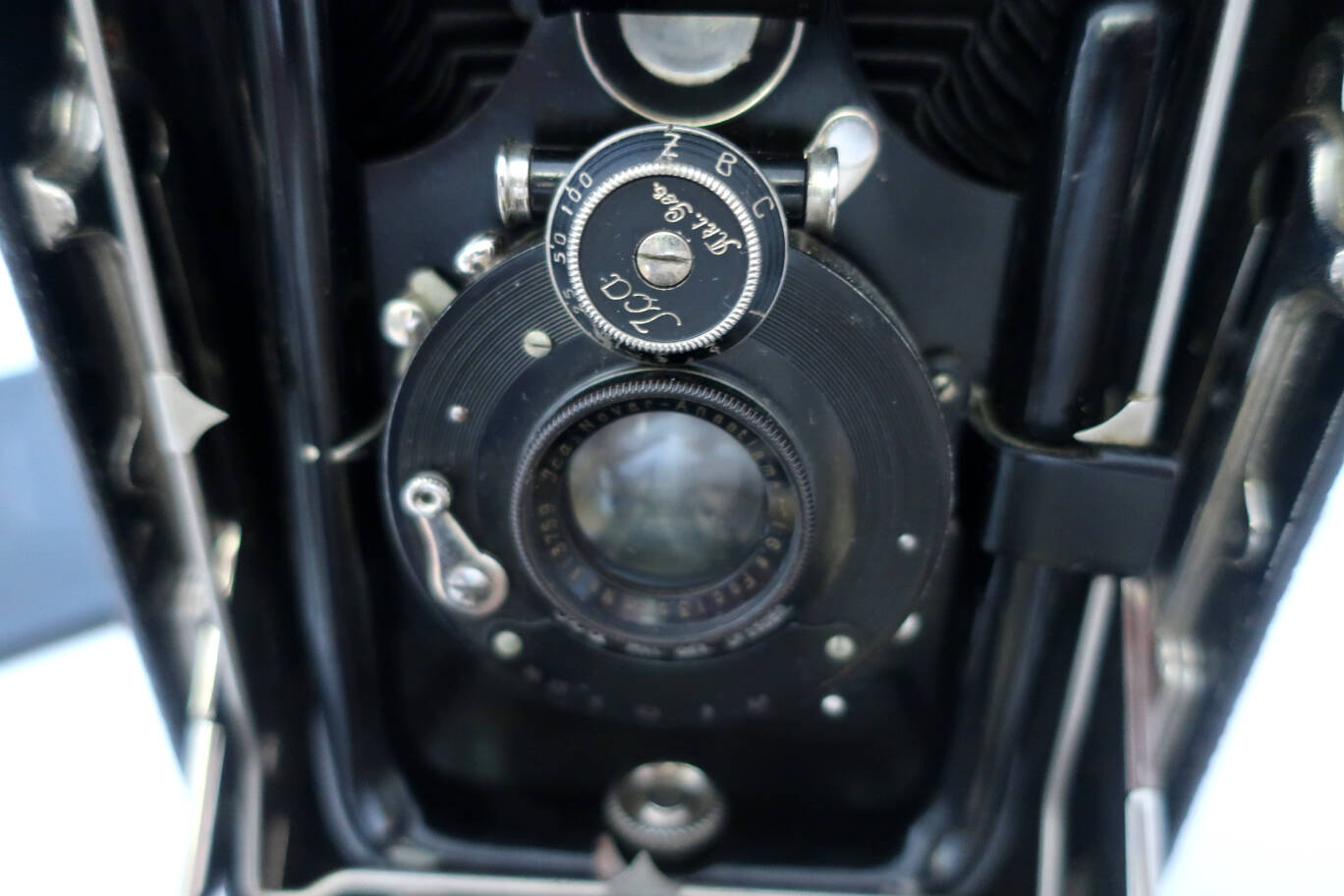
Lens and shutter.
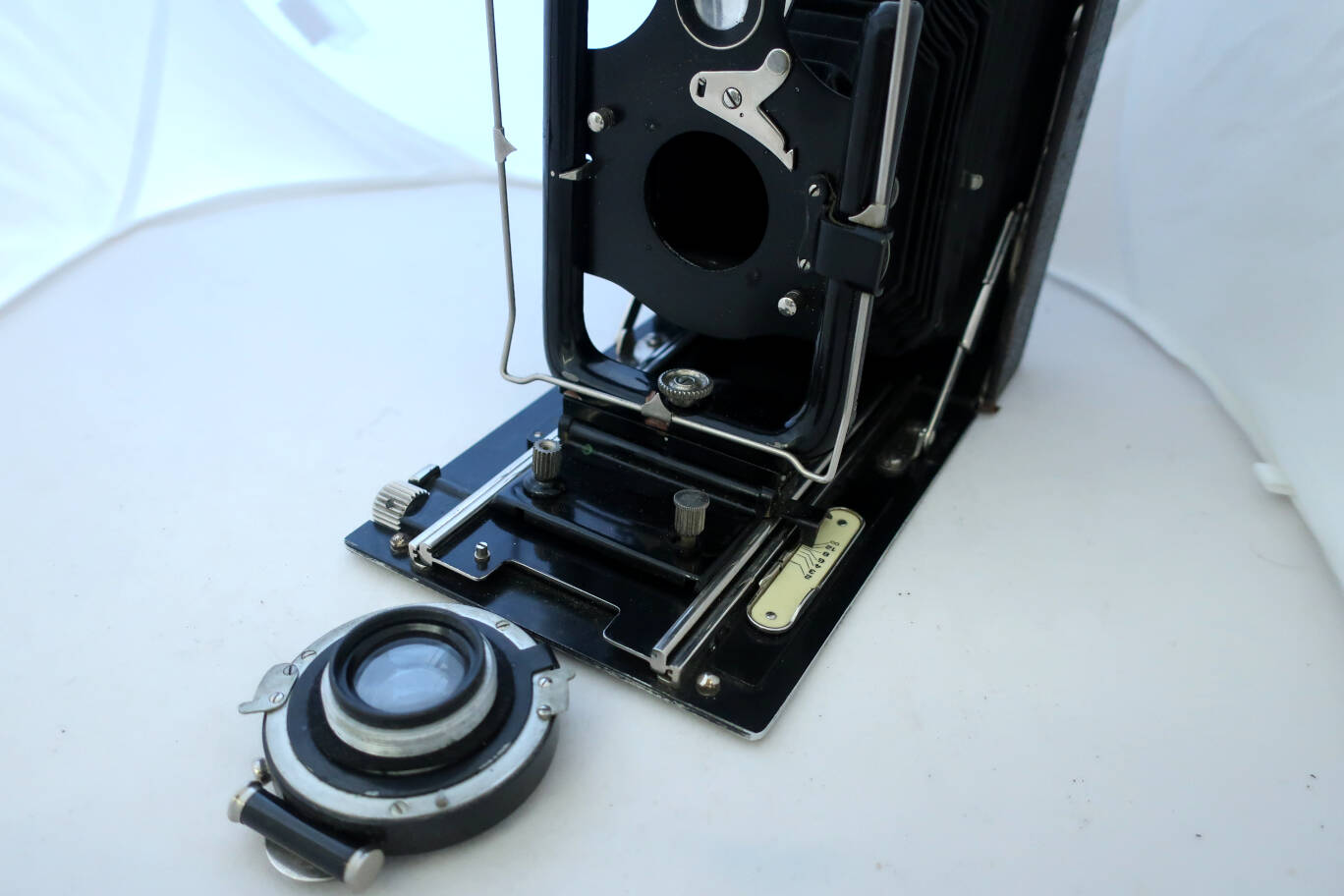
Lens/shutter unit deposed. The lens/shutter blocks can be switched between
the Icar, the Toska and the Ideal, but my Toska has a smaller hole in the
front standard. So some blocks are too big to pass through the hole. One
could easily widen the hole by 2mm and they would fit.
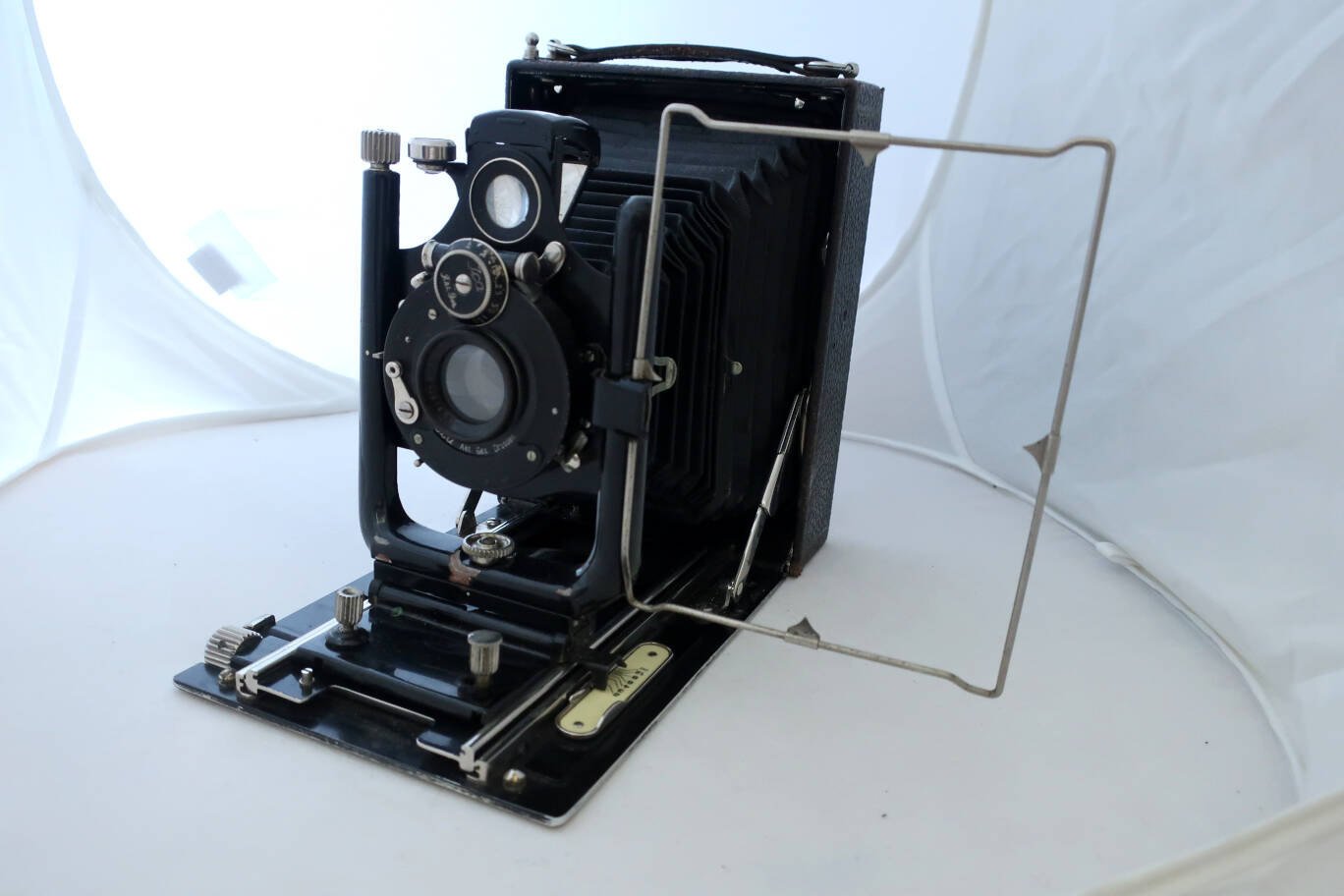
Rise/fall and shift movements are possible. There is a wire frame
on this camera, but it lacks the eyepiece.
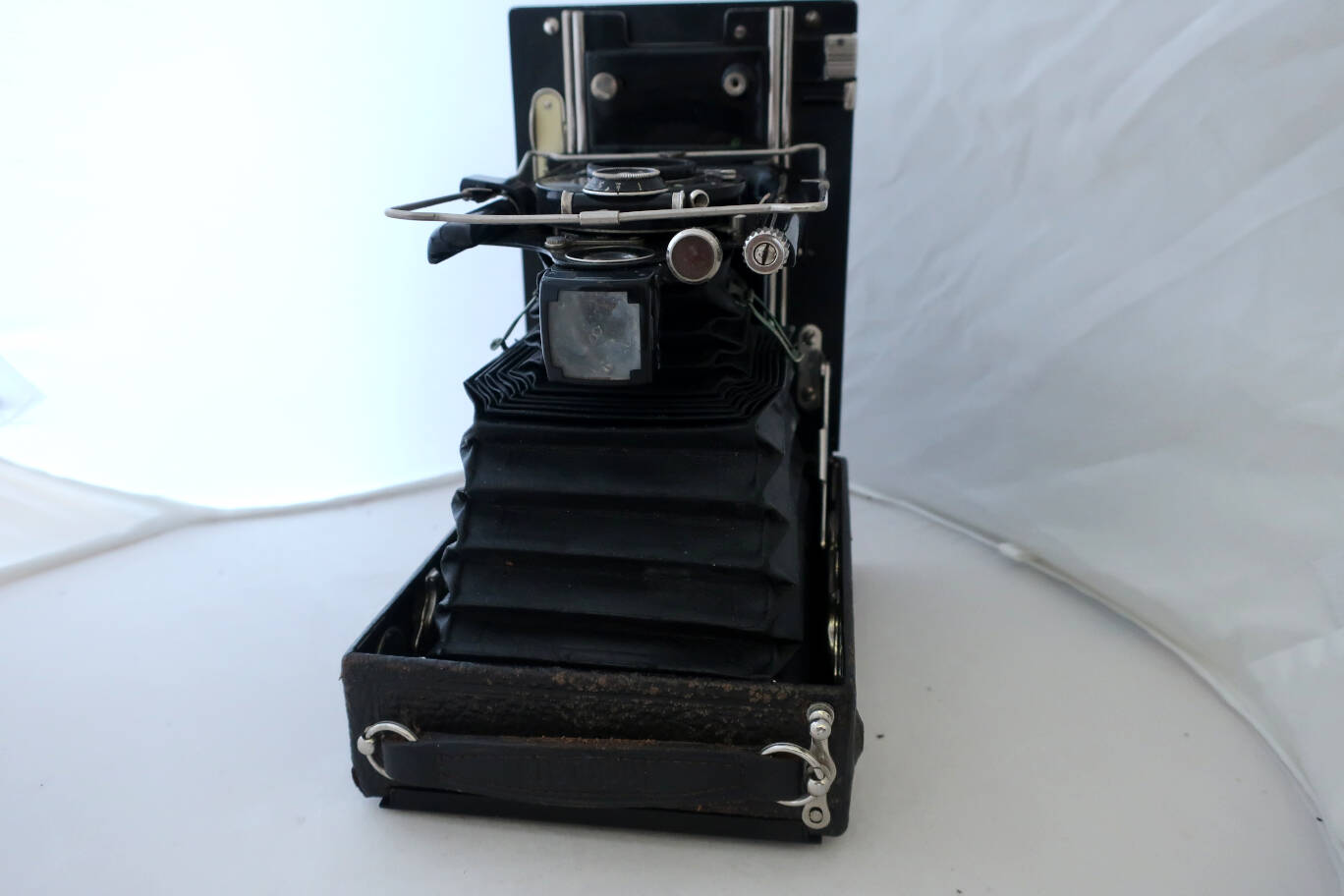
Seen from top.
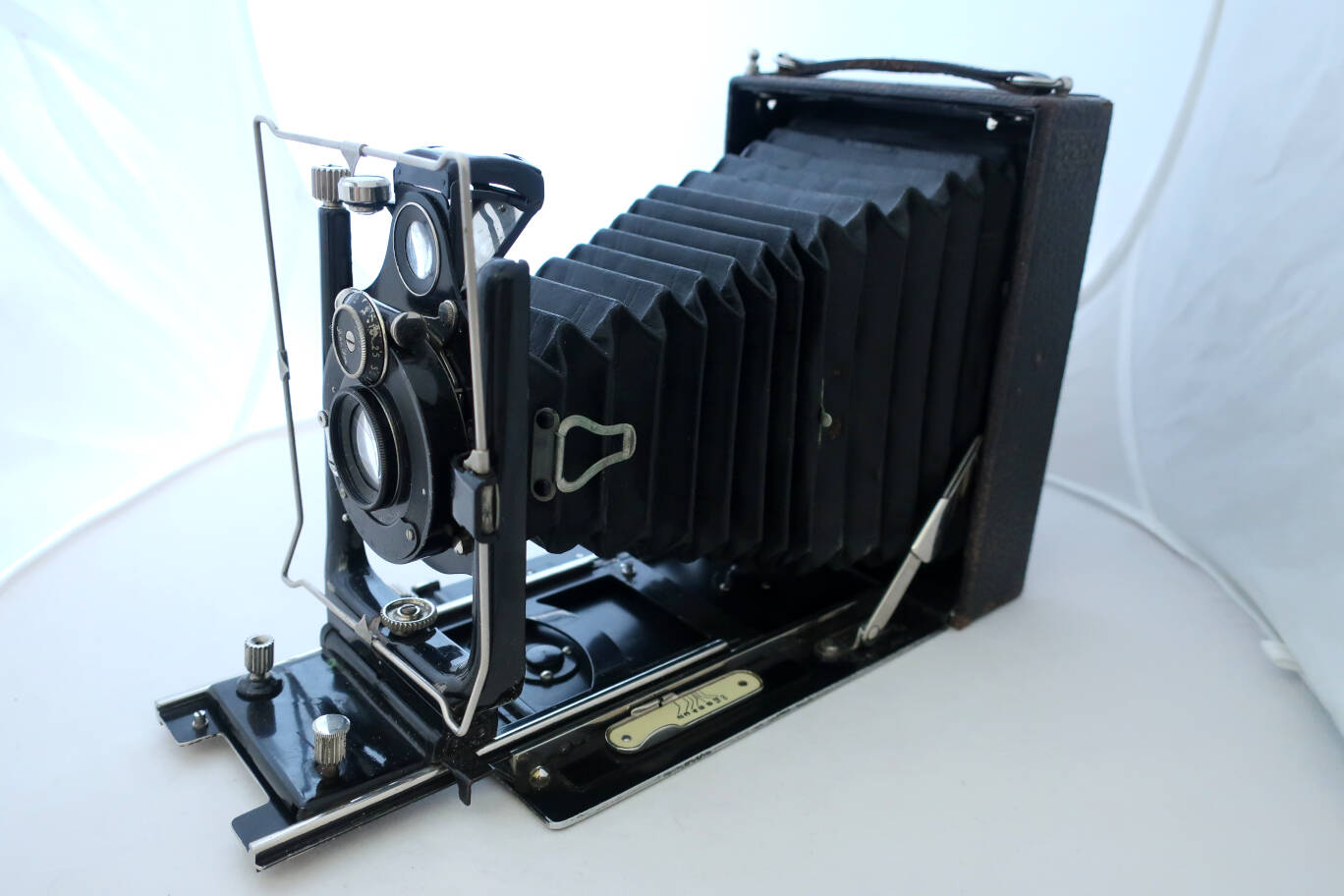
The camera has double extension
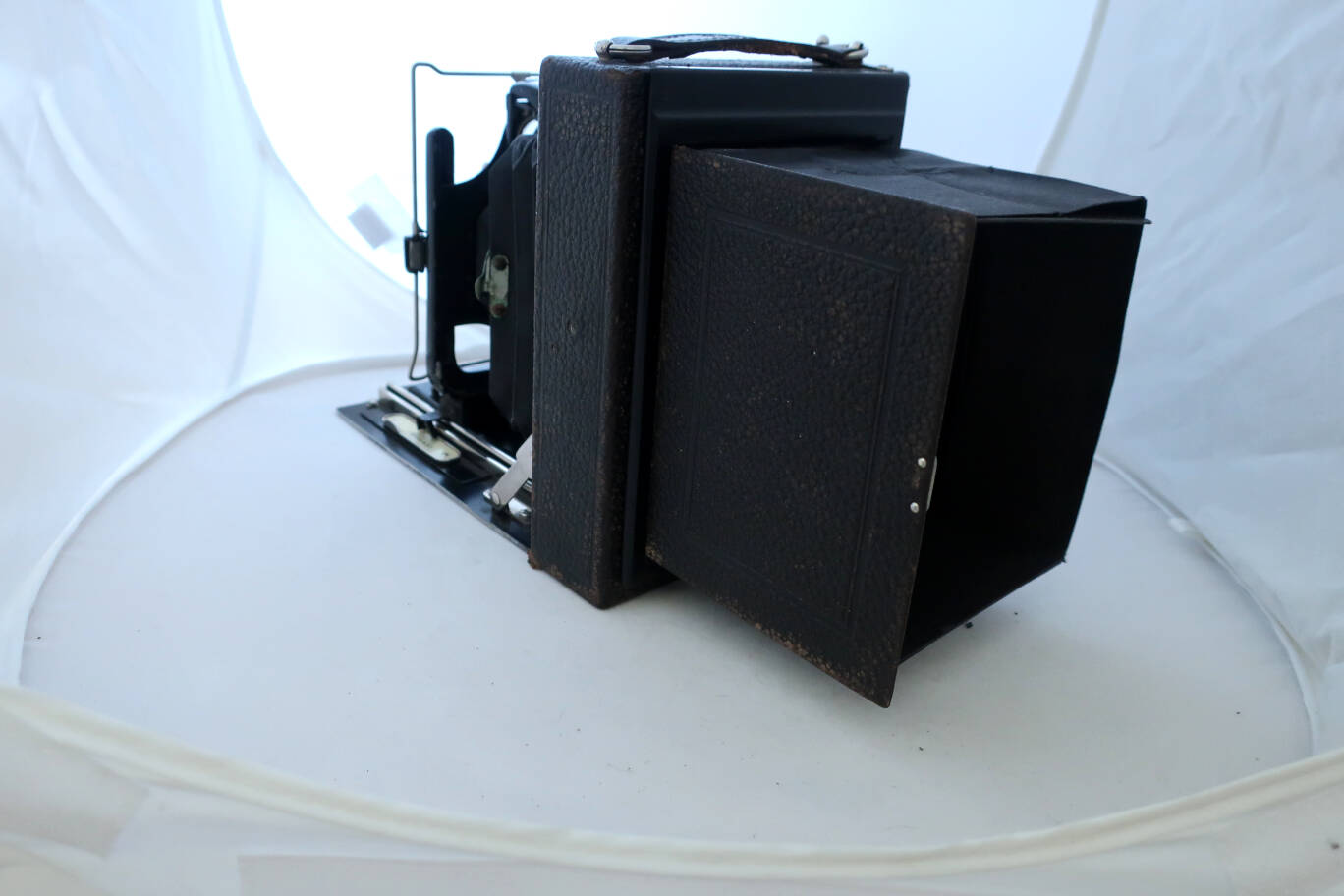
Back, hood open.
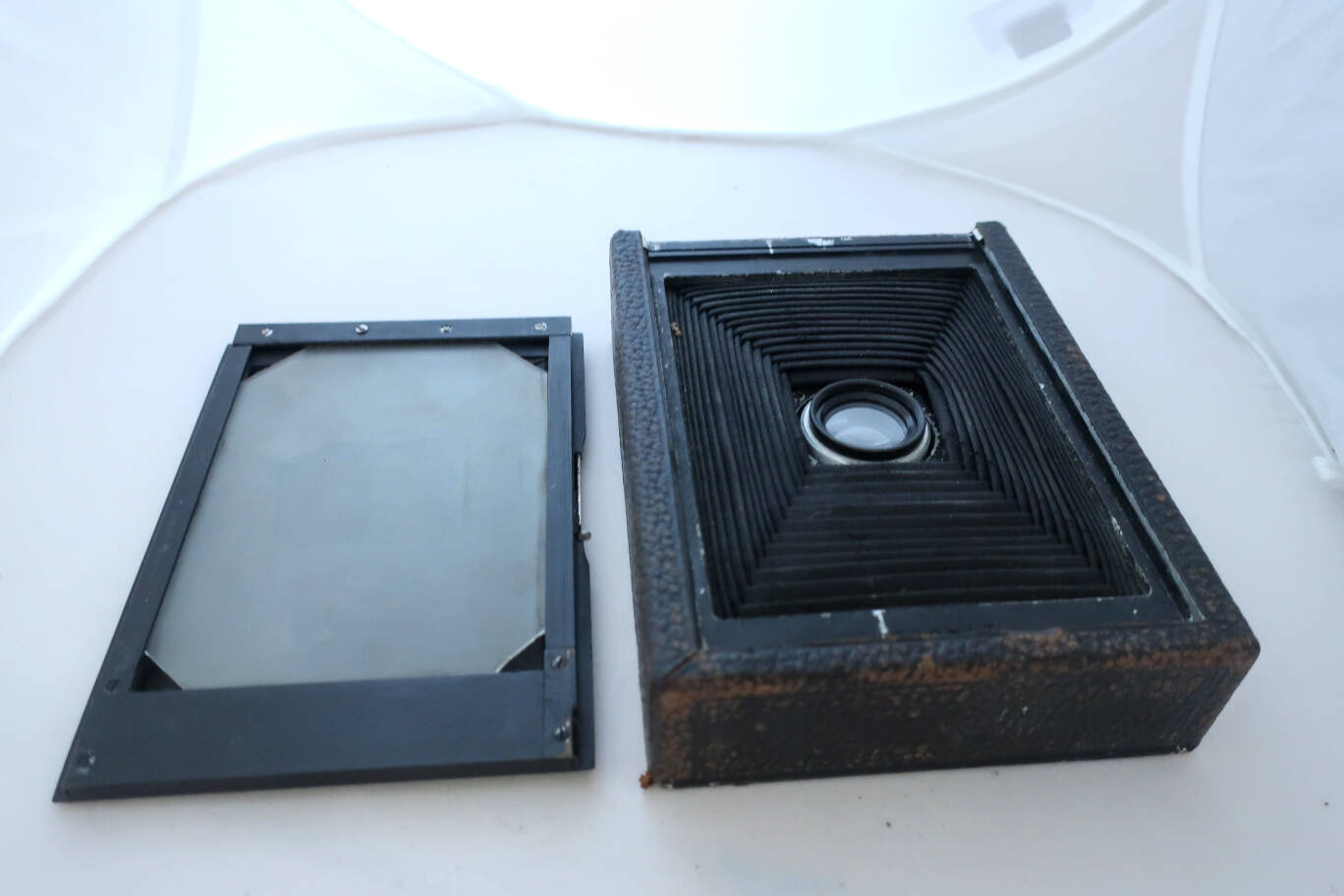 Ground glass deposed. This camera has a rapid change back. You don't have
to slide the backs or holders all the way in from the top, just insert the
bottom edge at the bottom of the back and swing it into place.
Ground glass deposed. This camera has a rapid change back. You don't have
to slide the backs or holders all the way in from the top, just insert the
bottom edge at the bottom of the back and swing it into place.
The
camera opens via a button on the left side, near the top. Lower the
bed until it clicks into place. Squeeze the tabs on the front standard
and extend, there is an automatic stop. You can either use the finder
and the distance indications or the ground glass to focus. Set shutter
speed and aperture, cock the shutter if it's not a permanent one. Put
a film holder into place, lift the dark slide and take your photo. Do
not forget to put the dark slide again. To shut the camera, push the
front standard to the end of the bed, press the hinges of the bed and
it will close.
These cameras are
about a century old. The lenses are uncoated and the shutters are simple.
Nevertheless they are a good entry into large format. The cameras are
leightweight and very compact seen the film size. 9x12 film is still
made. These cameras are very cheap, simple to use and can give a
lot of fun.










 Ground glass deposed. This camera has a rapid change back. You don't have
to slide the backs or holders all the way in from the top, just insert the
bottom edge at the bottom of the back and swing it into place.
Ground glass deposed. This camera has a rapid change back. You don't have
to slide the backs or holders all the way in from the top, just insert the
bottom edge at the bottom of the back and swing it into place.